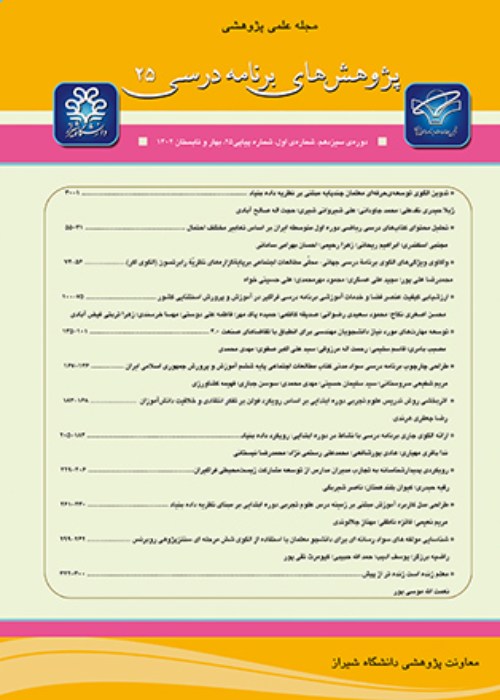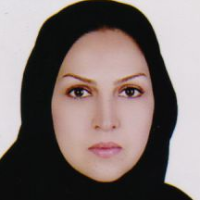Identifying Factors Affecting Flipped Teaching in the Higher Education Using Meta-Synthesis
The purpose of this study was to identify factors affecting flipped teaching in higher education. Although flipped teaching method is a new method in the field of education, a lot of research has been done on it due to its importance. Therefore, in the present study, to avoid duplication and conduct comprehensive research, previous studies were examined carefully utilizing meta-synthesis to determine the factors affecting flipped teaching. For this purpose, the researchers sought to address the following questions: What are the factors affecting flipped teaching in higher education? How can the relationship between these factors and the success of flipped teaching be explained? The present study was mixed in terms of data type, using both qualitative and quantitative data. The statistical population included all valid research articles related to the subject published in the last 10 years (2011-2021) and registered in specialized and scientific databases inside and outside the country. Sixty studies were purposefully selected using Critical Appraisal Skills Program (CASP). Sandelowski and Barroso’s (2006) seven-step method was used for the qualitative analysis of the selected studies. In addition, the data were analyzed using a researcher-made checklist and Thematic Content Analysis (TCA). Researcher self-monitoring and the coefficient of agreement were used to assess the validity and reliability of findings, respectively. Through coding, four factors affecting flipped teaching were identified, which included structural, educational, interpersonal, and individual factors. The structural theme included change in methods and support of managers. Flipped teaching synchronized the structure of the university with technology and provided students with a better idea of the university. Also, the findings showed that the rapid growth of technology affected educational structures, paving the way for the application of constructivist approaches in teaching-learning processes and the realization of inclusiveness in education. One of the changes that emerged from the data was the transition from traditional teaching methods, which were associated with over-reliance on knowledge and memory, to flipped teaching. This change in approach from teachercentered to student-centered classrooms engaged learners with high-level of cognitive skills. The educational theme highlighted the point that the main role of teachersin flipped classrooms was to design teaching materials with careful planning, which should aim at promoting comprehensive learning that included experiments, projects, and hands-on work. Accordingly, in writing a lesson plan, the instructor must know exactly where to start and what activities can best facilitate the fulfillment of lesson objectives. To this end, he/she must both broaden and deepen his/her level of knowledge. As a result, flipped teaching can foster the development of both students and teachers. Based on the interpersonal concept, interaction in flipped classrooms should be a constant flow that continues before and after the class. Flipped teaching, in addition to increased teacher and inclusive interactions, emphasizes the value of interactions between students. In a flipped classroom, more group discussion takes place, and students can take advantage of in-class opportunities to focus on practical skills, projects, and troubleshooting. The individual concept is concerned with the individual characteristics of teachers and learners/students and their role in the success of flipped teaching. Many instructors find it difficult to change their teaching methods. In this regard, flipped teaching allows teachers to distance themselvesfrom traditional methods and welcome students’ increasing tendency to utilize electronic devices, such as telephones, computers, and so on, in their studies. The abovementioned four central concepts, namely, structural, educational, interpersonal, and individual, not only overlap but also affect each other. To sum up, university administrators are encouraged to support changes in teaching methods, which, in turn, can facilitate teachers’ professional development and present the university as a scientific place that welcomes technological advances. These all will eventually lead to higher student satisfaction and success. Furthermore, education, particularly when enhanced with careful planning and appropriate content, time, place, and evaluation, can promote interpersonal interactions, increase students’ and teachers’ motivation, and, consequently, improve students’ academic achievement . Moreover, flipped teaching was found to be an effective method during the covid-19 pandemic. Students received the course content online and, having studied the materials, evaluation was done by the instructor in offline classes. The results of the present study showed that young learners were more accustomed to technological environments due to their familiarity with them. Therefore, using flipped teaching in higher education can be more productive than traditional methods of teaching. In this regard, it is suggested that administrators and university presidents encourage teachers to use flipped teaching by providing them with the required technological equipment. Teachers are invited to adopt this method of teaching to promote independent learning in students via virtual environments and appropriate use of technology. This is hoped to foster deep and meaningful learning in studentssince in our fast-changing world, students need to learn “how to learn” and become lifelong learners and creators, rather than receivers, of knowledge.
- حق عضویت دریافتی صرف حمایت از نشریات عضو و نگهداری، تکمیل و توسعه مگیران میشود.
- پرداخت حق اشتراک و دانلود مقالات اجازه بازنشر آن در سایر رسانههای چاپی و دیجیتال را به کاربر نمیدهد.




